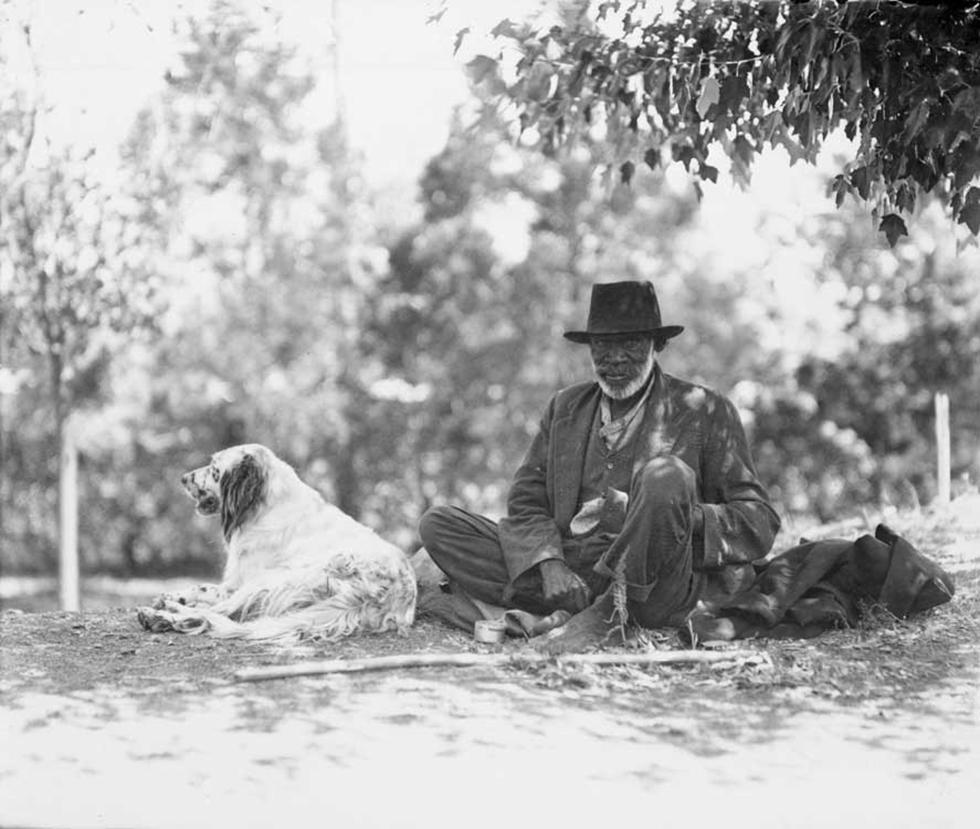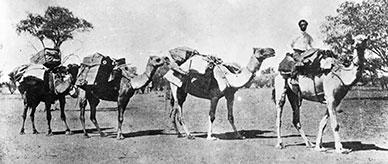


About the record
This is a photo of Wiradjuri man, John Noble, aka 'Marvellous', and his dog under a tree at the Bachelors Quarters in the Canberra suburb of Acton sometime in early 1926
Educational value
- This is a portrayal of an Aboriginal man, John Noble, in the 1920s, a time when Australia's Aboriginal and Torres Strait Islander population had declined to only 72,000 people – opinion is divided about the size of the Indigenous population before colonial settlement, but by the 1920s, it was significantly reduced from what it had been before the arrival of the settlers; the introduction of diseases to which Indigenous people had no immunity (such as the common influenza virus, chickenpox, smallpox and measles) has been suggested as the reason for up to 90 per cent of this decline.
- The Wiradjuri was one of the largest tribal groups in Australia at the time of early European contact. The Wiradjuri tribal boundaries probably ran south from Condobolin in New South Wales, including the areas of Wagga Wagga and Cootamundra, east to Gundagai and west along Billabong Creek, totalling an area of 97,100 square kilometres.
- This photograph depicts John ‘ Marvellous’ Noble and his dog sitting under a tree at the Bachelors Quarters in the Canberra suburb of Acton sometime before March 1926. The Bachelors Quarters provided housing to men working on the construction of Canberra. The photograph was taken by government photographer, William James Mildenhall, who captured the development of the Canberra area into our nation’s capital. (His collection is held here at the National Archives of Australia.)
- In May 1927, John Noble and fellow Wiradjuri man, Jimmy 'King Billy' Clements, walked from their mission just near Gundagai to Canberra, a distance of about 160 kilometres in order to attend the opening of the new Parliament House in Canberra on 9 May 2017.
- The opening of Parliament was attended by the Duke and Duchess of York, Queen Elizabeth II’s parents, and they apparently requested to be introduced to John and Jimmy.
- They attended, uninvited, in order to demonstrate what King Billy later described in The Argus newspaper as 'his sovereign rights to the Federal Territory'.
- In the late 19th century it was common for white colonists to give Aboriginal men what was thought to be the prized nickname of 'King', usually in recognition of bush-tracking skills and services to white settlers; in colonial Australia, brass crescent-shaped 'king plates' were often given as gifts to Aboriginal elders as symbols of recognition for their role as leaders in local Aboriginal affairs.
- The police tried to remove both Jimmy Clements and John Noble from Parliament House, arguing that they were inappropriately dressed, but both refused to leave; Aboriginal rights had been brought to the public's attention in the 1920s through the formation of organisations such as the Australian Aborigines Progressive Association, which was formed in Sydney in 1924.
- This was possibly the first recorded instance of Aboriginal protest at Parliament House in Canberra – since then, Parliament House has been famous for the Aboriginal Tent Embassy, which was erected on the lawn outside on Australia Day (26 January) in 1972 as part of Aboriginal protests about land rights, and Prime Minister William McMahon's statement that day that Aboriginal people need to demonstrate reasonable economic and social use of the land.
Acknowledgments
Learning resource text © Education Services Australia Limited and the National Archives of Australia 2010.
Related themes
Need help with your research?
Learn how to interpret primary sources, use our collection and more.





